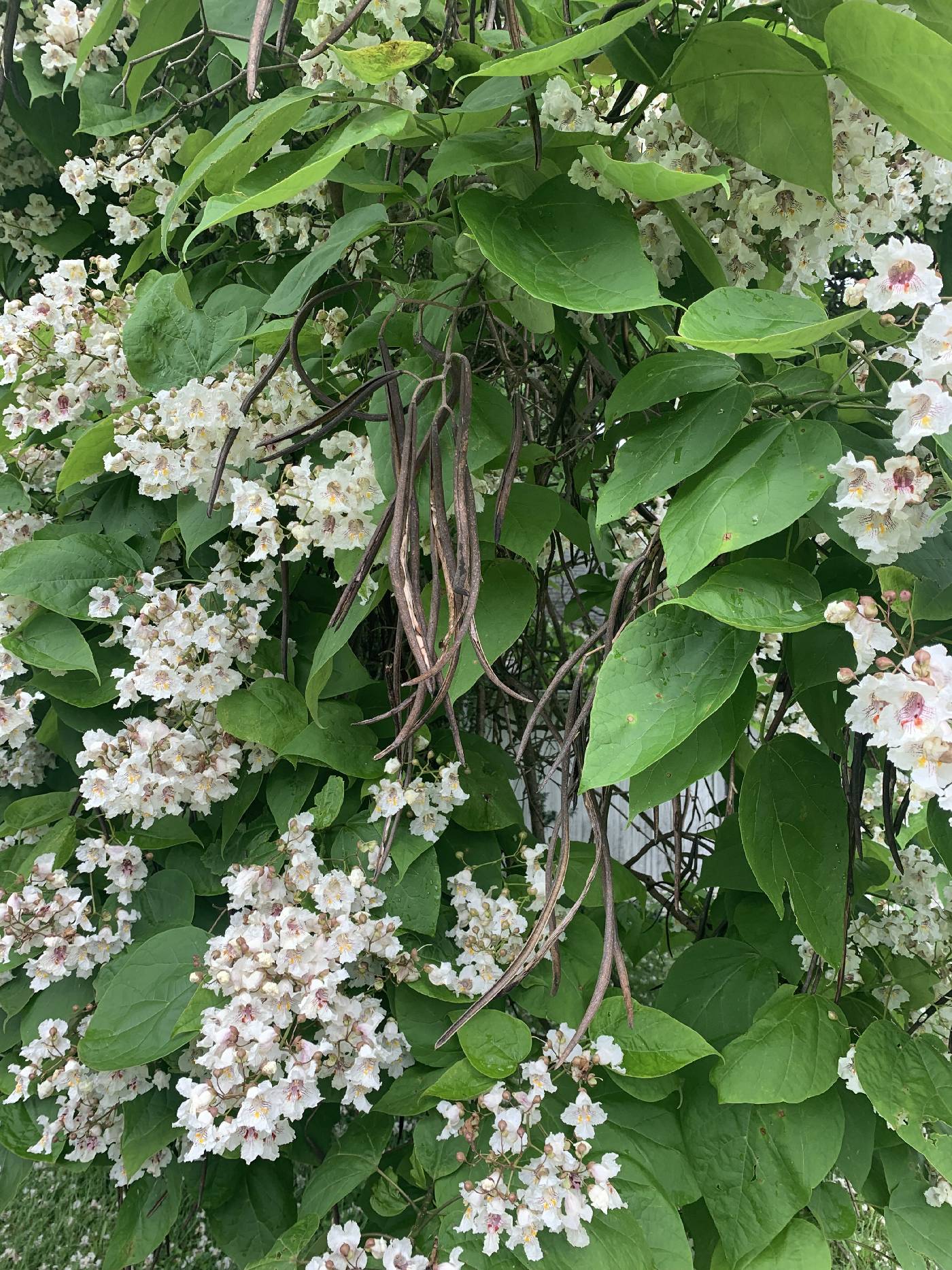
|
Family: Bignoniaceae |
PLANT: Deciduous trees. LEAVES: simple, opposite, rarely whorled, the margins entire or coarsely lobed, 3-5-veined at the base, the petioles to 16 cm long. FLOWERS: calyx splitting irregularly or 2-lipped; corolla white, pink or with yellow lines, campanulate, bilabiate with 2 smaller upper lobes and 3 larger lower ones; stamens 2, each of the diverging anther cells 3-4 mm long; staminodia 3, small; style slightly exceeding the stamens. FRUITS: cylindric, very long and narrow. SEEDS: numerous, compressed, winged, bearing a tuft of long hairs at each end. NOTES: (From and Indian name for the tree.) -- 10 spp. N. Amer. and Asia. REFERENCES: Mason, Charles T., Jr. 1999. Bignoniaceae. Ariz.-Nev. Acad. Sci. 32(1). Cal splitting irregularly or more commonly into 2 unequal lobes; cor large, evidently bilabiate, with an oblique, campanulate tube and 5 spreading lobes erose or crisped on the margin; stamens commonly 2, about as long as the cor-tube, accompanied by 3 minute staminodia, or occasionally 4 with 1 staminodium; fr elongate, cylindric, bilocular, loculicidal; seeds flat, narrowly oblong, the 2 wings terminating in hairs; trees with opposite or whorled, simple, cordate-ovate to rotund, entire or shallowly lobed lvs and terminal panicles of large, white or yellowish fls ±spotted or mottled with yellow and purple. 10+, e. N. Amer. and e. Asia. Gleason, Henry A. & Cronquist, Arthur J. 1991. Manual of vascular plants of northeastern United States and adjacent Canada. lxxv + 910 pp. ©The New York Botanical Garden. All rights reserved. Used by permission. |
This project was made possible in part by the Institute of Museum and Library Services [MG-70-19-0057-19].
Powered by Symbiota



